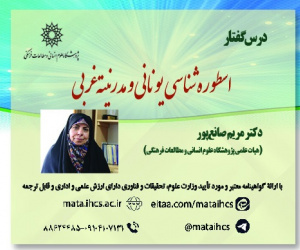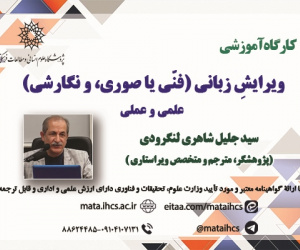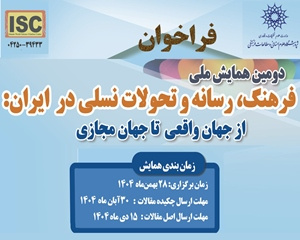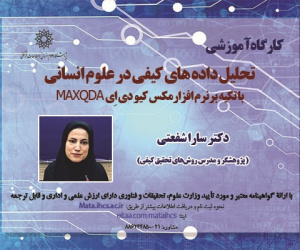شناسایی الگوی توسعه گردشگری سوریه در دوران پسا بحران "با تأکید بر شهر دمشق" (مقاله علمی وزارت علوم)
درجه علمی: نشریه علمی (وزارت علوم)
آرشیو
چکیده
اگرچه تا کنون هیچ کشوری موفق به جلوگیری از تأثیرات منفی جنگ ها و بی ثباتی امنیتی بر بخش گردشگری نشده است بااین حال، نیاز به توسعه گردشگری پس از عبور از این بحران ها به دلیل نقش بسیار زیادی که در حمایت از اقتصاد مناطق آسیب دیده دارد، از اهمیت و اولویت برخوردار است. هدف پژوهش حاضر شناسایی عناصر و مقوله های کلیدی در برنامه ریزی توسعه گردشگری است. به نحوی که در نظر گرفتن آن ها در برنامه ریزی توسعه گردشگری در سطح ملی بتوان به بهینگی لازم در برنامه ریزی دست یافت و از هزینه های ناخواسته اجتناب نمود. به منظور دستیابی به هدف یادشده روش کیفی با ابزار مصاحبه کارشناسی مدنظر قرارگرفته است. درمجموع از نظرات 30 کارشناس و پژوهشگر فعال در حوزه گردشگری کشور سوریه به روش گلوله برفی استفاده شده است. برای تجزیه وتحلیل داده ها از نرم افزار تحلیل محتوای کیفی MaxQDA 2020 استفاده شده است. پژوهش حاضر در مرحله، ابتدا کدها و مقوله های محوری مرتبط با گردشگری کشور سوریه را شناسایی نموده است و سپس با بررسی ارتباطات این کدها کدبندی انتخابی که روند و ارتباطات این کدها را نشان می دهد، انجام شده است. در بخش کدبندی انتخابی 6 کد اصلی شامل: کارکردهای گردشگری، موانع توسعه گردشگری، الزامات توسعه گردشگری، اولویت بازارهای هدف، انواع گردشگری و ذی نفعان گردشگری بوده است. در بخش انواع گردشگری پتانسیل توسعه گونه های گردشگری در شهر دمشق معرفی شده است. در بخش کدبندی انتخابی نیز ارتباطات، الزامات و پیوندهای مرتبط با توسعه گردشگری سوریه در دوران پس از بحران داخلی ترسیم شده است. الگوی ترسیم شده در قالب روابط انتخابی می تواند مسیر حرکت در راستای توسعه گردشگری کشور سوریه را ترسیم نماید و به برنامه ریزان این حوزه جهت برون رفت از وضعیت فعلی و حرکت به سمت وضعیت بهینه کمک نمایدIdentifying the pattern of Syrian tourism development in the post-crisis period"with an emphasis on the city of Damascus"
Although so far no country has succeeded in preventing the negative effects of wars and security instability on the tourism sector, however, the need to develop tourism after passing through these crises due to its great role in supporting the economy of the affected areas. It has importance and priority. the aims of the current research is to identify key elements and Components of the tourism development planning in Damascus city. In such a way that considering them in the planning of tourism development at the national level can be found in the optimal planning and avoid unwanted expenses.In order to achieve the mentioned goal, a qualitative method with an expert interview tool has been considered. the opinions of 30 experts active in the field of tourism in Syria have been used. Questionnaire analysis is also used in the qualitative content analysis software MaxQDA 2020. this paper have identified the core codes and categories related to tourism in Syria, and then by examining the connections of these codes, selective coding has been done that shows the trends of these codes. In the selective coding section, 6 main codes. tourism functions, tourism development obstacles, tourism development requirements, priority of target markets, types of tourism and tourism beneficiaries. In the section of types of tourism, the potential of developing types of tourism in the city of Damascus has been introduced. In the selective coding section, connections, requirements and links related to the development of Syrian tourism in the post-crisis era are drawn
Introduction
The Syrian crisis, involving armed conflicts by quasi-military groups and terrorist activities by organizations like ISIS, began in 2011, inflicting countless damages to the national resources and capital. According to the United Nations, over 5,440,000 Syrians were registered as refugees in various countries by December 2017. Considering the population of 21 million at the onset of the crisis in 2011, a considerable portion of the population migrated. Additionally, significant casualties and injuries have been inflicted on the human resources. Syria witnessed 1,949 terrorist incidents from 1970 to 2016, with approximately 1,800 occurring from 2001 to 2016, constituting 92% of all incidents. From 2011 to 2016, 95%[1] of the casualties occurred from terrorist incidents in Syria. Damage to the national infrastructure (physical and economic) is another aspect of the harm inflicted, with an estimated $41 billion in damages to infrastructure[2] in six major cities[3], according to the World Bank. Economists forecast a 6.3% growth in the tourism sector in 2018 compared to the gross domestic product growth. Given these factors, Syria needs reconstruction of its infrastructure and compensation for the damages caused by the domestic crisis. Therefore, comprehensive planning and the selection of tourism development strategies are considered a strategy for development and compensation for damages caused by years of war and a top priority for reviving the social and economic sectors of Syria. In this regard, the role of Damascus as the national capital, the center of political, economic, and legal decisions, is particularly important. Furthermore, government attention and protection during the crisis have minimized damage to the infrastructure of this city. Consequently, the higher security of this city compared to other regions causes a higher priority and cost for the presentation of the tourism development model with an emphasis on Damascus. The success of Damascus in promoting tourism development goals can serve as a model for other regions of Syria. In general, this research aims to identify concepts and principles to clarify the rapid and cost-effective development of Syria's tourism engine.
Methodology
This research has an applied methodology and is among the qualitative research. Semi-structured interviews are used for data collection. The statistical population consists of two groups, experts (economic activists and managers in the tourism management sector in Syria) and researchers (professors and students in the tourism field in Syria with a track record of publishing articles and books about tourism). A total of 30 in-depth interviews were conducted. Furthermore, MAXQDA 2020 qualitative analysis software was used to analyze the interview data. Grounded theory serves as the theoretical framework for the research.
Results
The tourism functions are at the primary level of the identified themes. These functions include 10 cases. The role of tourism in the national economy (pre-war), tourism and peace, expanding restaurant-dining functions, and the effects of tourism development on the economy are the most important factors. The second theme includes barriers to tourism development, including sub-codes such as infrastructural factors, human resources, political-security barriers, economic barriers, and neglect of tourism branding and marketing. Each code related to barriers to tourism development comprises multiple factors highlighted at various levels. The third theme includes the requirements for tourism development based on interviews. This theme includes three sub-codes: Comprehensive and coordinated tourism development planning, health expansion, pandemic control, infrastructure reconstruction by the government sector, international tourism, domestic tourism, focus on tourist hubs in Damascus, security expansion, tourism expansion, trust as the main premise of tourism development, capital provision through taxation, and tourism marketing and branding. The frequency of repetition of items for the codes is presented in the table below. The fourth theme of the interviews includes target markets. This theme consists of sub-codes such as Arab and Persian Gulf countries, Iranian-Shiite pilgrims, and traditional historical attractions preferred by Europeans. The scores of the first and second sub-codes are presented in the following table. The fifth theme of the interviews covers the types of tourism. These types include sub-codes such as the potential for ecotourism development, urban tourism, dark tourism, and spiritual-religious tourism. The following table describes these items and the number of repetitions for each item.
Conclusion
Six main themes, emphasized by experts and researchers are first identified: The functions of tourism, barriers to tourism development, requirements for tourism development, priorities of target markets, types of tourism, and tourism stakeholders. Each of these themes has been emphasized with various branches. The higher frequency of certain factors indicates their importance. In other words, the barriers to tourism development, with 91 repetitions, have been the most important aspect of Syria's tourism development. Following this theme, the requirements for tourism development with 53 repetitions, types of tourism with 31 repetitions, tourism functions with 19 repetitions, priorities of target markets with 11 repetitions, and tourism stakeholders with 6 repetitions have been highlighted. In general, codes such as "spiritual-religious tourism (not necessarily religious tourism)" with 9 repetitions, "weaknesses in advertising, narration, and branding" with 5 repetitions, "energy constraints in the tourism sector" with 5 repetitions, and "budget shortfall and reduction in government's tax revenue preventing tourism investment" with 4 repetitions have been the most emphasized factors by experts and researchers in the tourism sector in Syria.
Funding
There is no funding support.
Authors’ Contribution
Authors contributed equally to the conceptualization and writing of the article. All of the authors approved thecontent of the manuscript and agreed on all aspects of the work declaration of competing interest none.
Conflict of Interest
Authors declared no conflict of interest.
Acknowledgments
We are grateful to all the scientific consultants of this paper.
[1]. A total of 12,583 out of 13,132 people were killed from 2011 to 2016.
[2]. In agriculture, education, energy, health, housing, transportation, water, and hygiene sectors
[3]. Aleppo, Dar'a, Hama, Homs, Idlib, and Latakia







